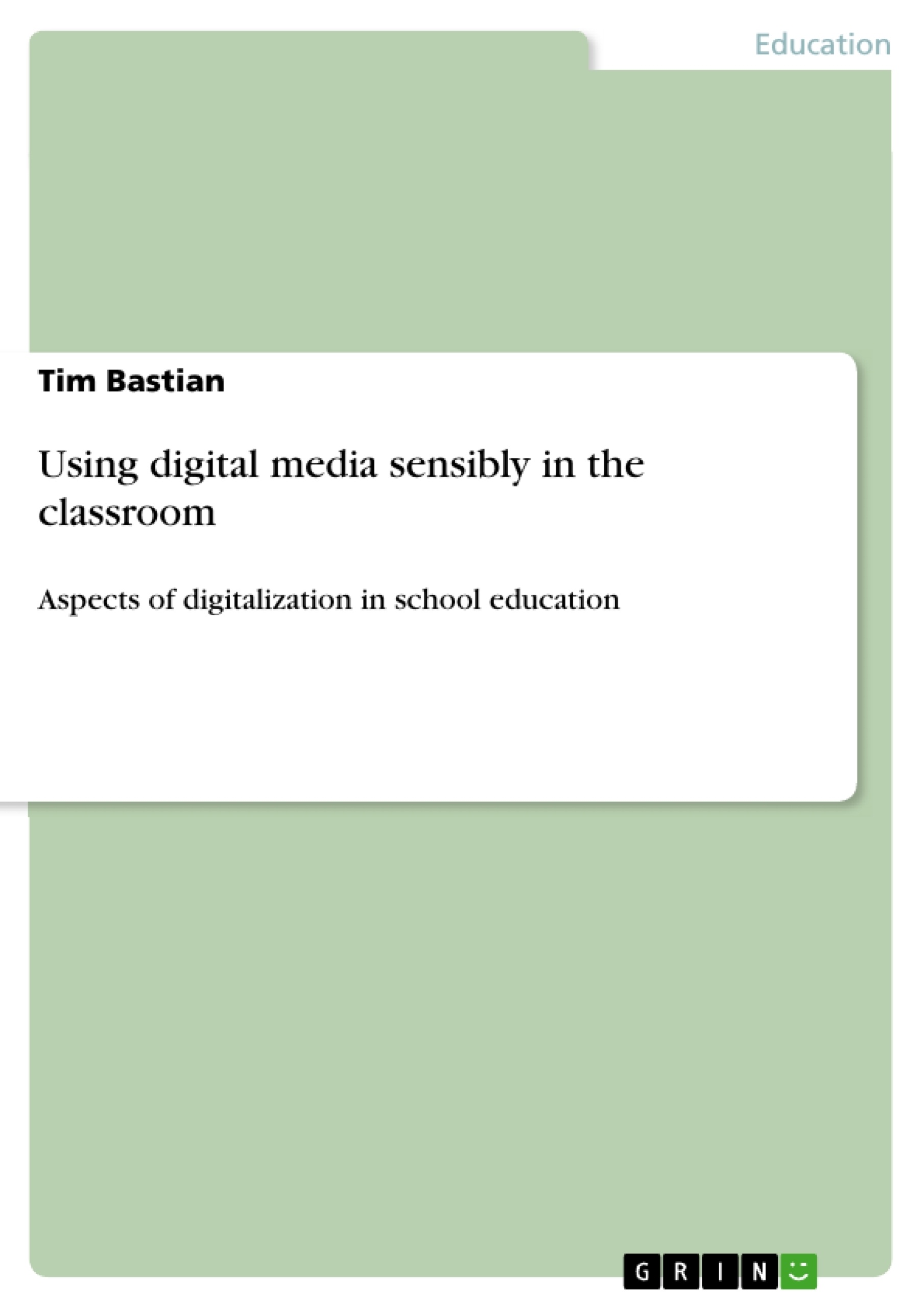Hardly any other society is as critical of digital media as it’s the case in Germany. This attitude also slows down the use of digital media in school. And this despite the fact that new technologies can noticeably improve teaching. In addition, children and young people must also learn how to use the new media consciously.
Why are the reservations about digitalization so strong in Germany? Under what conditions could this change? How effective is digitally supported learning really? In his book, Tim Bastian presents the advantages and disadvantages of digitalization in school education.
Bastian describes how computer technology has developed over the last few decades and the importance it already has for teaching and learning processes as well as for the development of lessons. It clarifies how a learning-effective and reflected work with digital media works.
From the content:
- social media;
- Digital dementia;
- hypertext;
- Teacher;
- Media Literacy
Inhaltsverzeichnis (Table of Contents)
- Introduction: Problem definition, research interest, methodological precedentgo
- Hypertext systems - features, structure, potentials, objections
- Empirical studies on the effectiveness of digital media
- Meta-analyses
- Tablet use in schools and lessons
- Reasons for the overall low effect sizes
- Concerns and objections against digital learning at school
- Fundamental criticism: Manfred Spitzer and Rolf Lankau
- Parallels to the criticism of the hypertext structure of the 80s and 90s
- Summary and evaluation
- Conditions for success and failure for digital teaching
- Insights and backgrounds on learning in schools of the future
- Franz-Stock-Gymnasium Arnsberg
- Community School Alemannenschule Wutöschingen
- European School Otto-Hahn-Gymnasium Monheim
- Schools of the future - reasons for their success in the use of digital media
- Conclusion - Results, Desiderata, Outlook
Zielsetzung und Themenschwerpunkte (Objectives and Key Themes)
This bachelor thesis aims to explore the potential of digital media in educational settings while addressing concerns and objections raised by critics. It analyzes the historical development of hypertext systems and their application in learning processes. The study aims to identify and evaluate empirical findings on the effectiveness of digital learning, considering both positive and negative outcomes. Ultimately, the thesis seeks to define conditions for success and failure in utilizing digital media for teaching and learning, providing real-world examples of schools successfully implementing digital technologies.
- The role and effectiveness of digital media in education
- Historical development and criticism of hypertext systems
- Empirical findings on the impact of digital learning
- Conditions for successful and unsuccessful digital teaching
- Real-world examples of schools effectively using digital media
Zusammenfassung der Kapitel (Chapter Summaries)
The first chapter introduces the context of the study, highlighting the contrasting perspectives on digital media in education and emphasizing the need to address the gap between critical views and successful implementation. It briefly explores the history and development of hypertext systems as a foundation for understanding the current digital learning environment.
Chapter two delves deeper into hypertext systems, outlining their features, structure, potentials, and criticisms. The chapter draws connections between the historical hypertext debate and the contemporary discussion on digitization, foreshadowing the critical analysis to follow.
Chapter three examines empirical findings on the effectiveness of digital media in education. It analyzes meta-studies, the role of tablets in classrooms, and the factors contributing to the overall low effect sizes reported in studies. This chapter critically evaluates the interpretation of empirical data, highlighting the varied conclusions drawn depending on individual perspectives.
Chapter four explores the ongoing debate surrounding digital education. It examines arguments made against digital learning, presenting criticisms from socio-psychological, legal, and media-theoretical perspectives. It then delves into the similarities between the current debate and the criticisms levied against hypertext in the 1980s and 1990s.
Chapter five shifts focus towards identifying conditions for success and failure in utilizing digital media for teaching. It considers the roles of personnel development, organizational development, and teaching development in facilitating a successful digital learning environment. This chapter lays the groundwork for the practical application of the research findings in the subsequent chapter.
Chapter six presents case studies of successful schools that have effectively integrated digital media, primarily tablets, into their daily operations. It examines these schools' approaches, drawing insights from pedagogical-didactic literature and observations of their classrooms and interactions with educators and administrators.
Schlüsselwörter (Keywords)
This bachelor thesis focuses on the complex and evolving landscape of digital education, examining the interplay between theoretical discussions on hypertext systems, empirical research findings on the effectiveness of digital learning, and the practical realities of implementing digital media in school environments. Key themes include the historical development of hypertext, critical analysis of digital media's impact on learning, conditions for success and failure in utilizing digital technologies, and the practical implications of these findings for schools.
- Quote paper
- Tim Bastian (Author), 2019, Using digital media sensibly in the classroom, Munich, GRIN Verlag, https://www.grin.com/document/1176140



